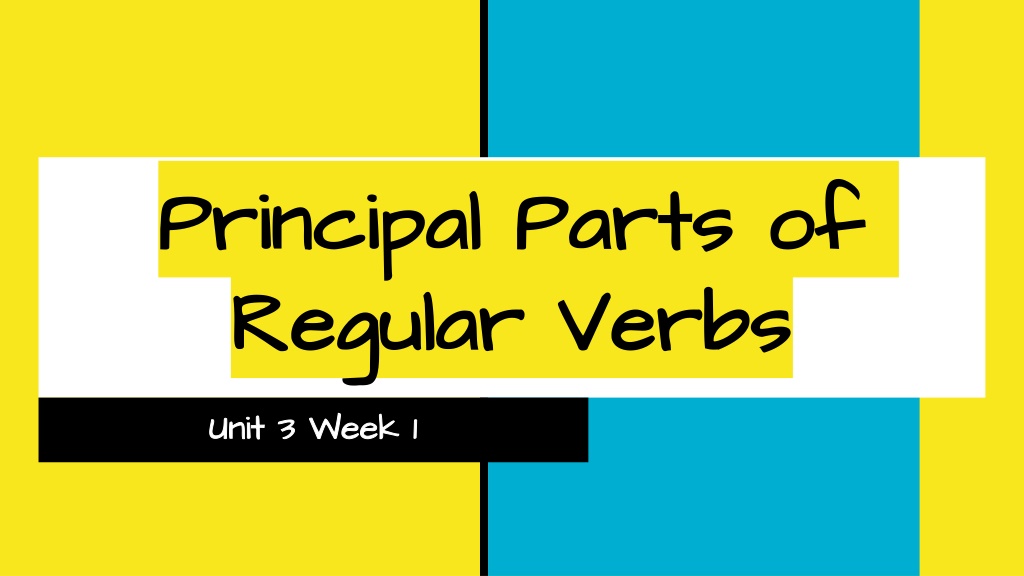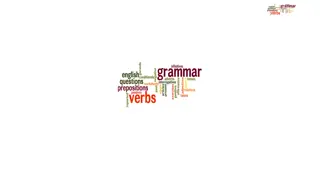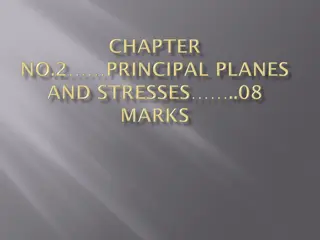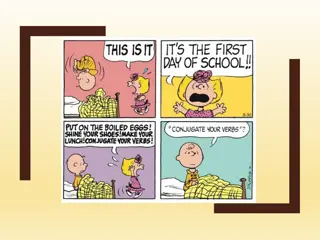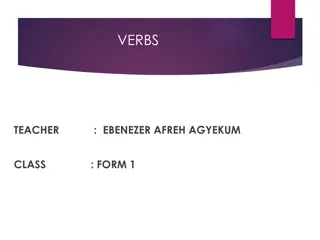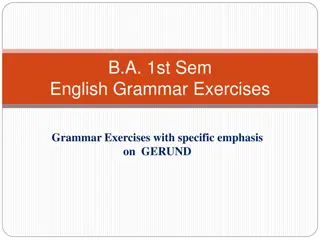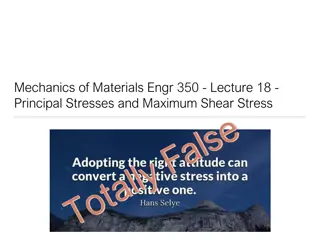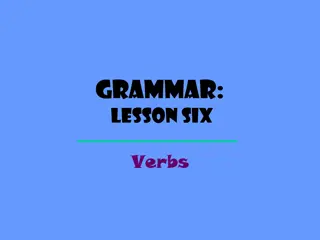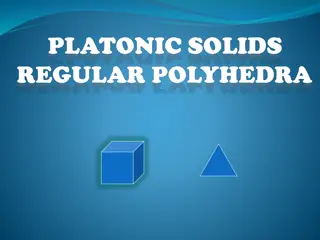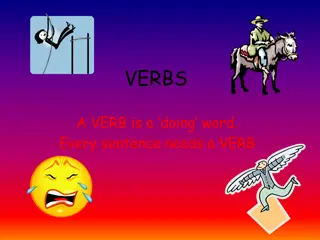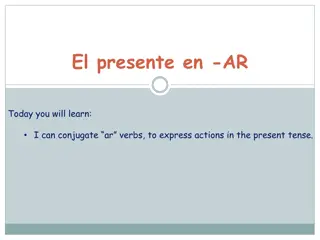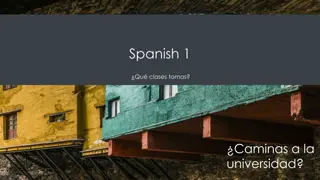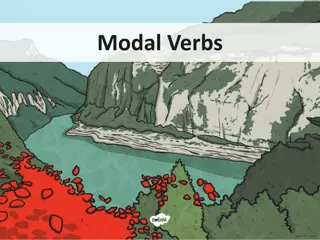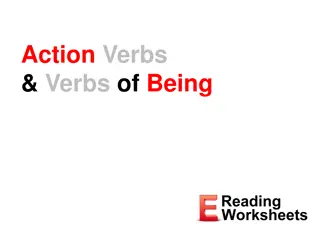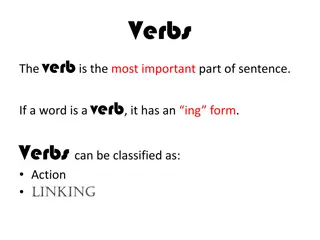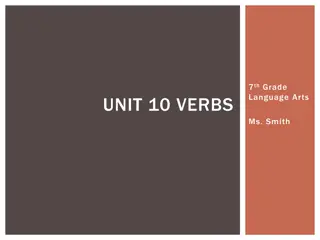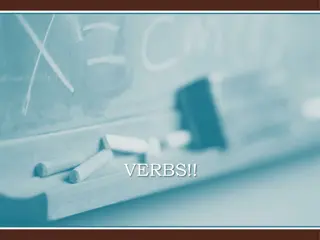Understanding Principal Parts of Regular Verbs and Practice Exercises
Explore the principal parts of regular verbs including present, present participle, past, and past participle forms. Understand how regular verbs form their past and past participle, practice exercises to identify verb forms in sentences, and learn about verb conjugation rules.
Download Presentation

Please find below an Image/Link to download the presentation.
The content on the website is provided AS IS for your information and personal use only. It may not be sold, licensed, or shared on other websites without obtaining consent from the author. Download presentation by click this link. If you encounter any issues during the download, it is possible that the publisher has removed the file from their server.
E N D
Presentation Transcript
Principal Parts of Principal Parts of Regular Verbs Regular Verbs Unit 3 Week 1 Unit 3 Week 1
Principal Parts Principal Parts A verb s tenses are made from four basic forms: (Present, Present Participle, Past, & Past Participle)
Present Present Present Participle Present Participle Past Past Past Participle Past Participle watch (am, is, are) watching watched (has, have, had) watched carry (am, is, are) carrying carried (has, have, had) carried jump (am, is, are) jumping jumped (has, have, had) jumped learn (am, is, are) learning learned (has, have, had) learned crawl (am, is, are) crawling crawled (has, have, had) crawled move (am, is, are) moving moved (has, have, had) moved
Regular verbs Regular verbs A regular verb forms its past and past participle by adding A regular verb forms its past and past participle by adding - -ed or the present form. the present form. ed or - -d to d to The present and the past form can be used by themselves as verbs. The present participle and the past participle are always used with a helping verb. Remember, when a verb ends with a consonant and y, change the y to i before adding -ed. examples: cried, hurried, dried) When a one-syllable verb ends with a vowel and a consonant, double the consonant before adding -ed. (examples: hopped, shipped, jammed)
Lets Practice... Let s Practice... What is the underlined part in each sentence? 1. 2. Jack saves his strength. ________________ 3. The sun warmed his back. _________________ 4. Shelby has studied for hours. _______________ 5. Hannah walks to school each day. _______________ 6. Nick is going to the football game on Friday. _______________ 7. I have watched that movie several times. ______________ 8. Marissa and I are taking our cameras with us on vacation. _____________ 9. The plane flies above us. ___________________ The porcupine terrified the young boy. ___________________
Answers... Answers... What is the underlined part in each sentence? 1. 2. Jack saves his strength. present 3. The sun warmed his back. past 4. Shelby has studied for hours. Past participle 5. Hannah walks to school each day. present 6. Nick is going to the football game on Friday. Present participle 7. I have watched that movie several times. Past participle 8. Marissa and I are taking our cameras with us on vacation. Present participle participle 9. The plane flies above us. present present The porcupine terrified the young boy. past past present past Past participle present Present participle Past participle Present
